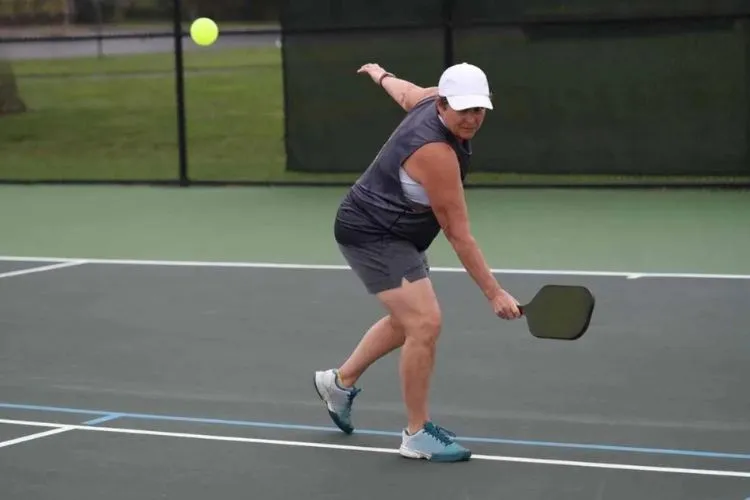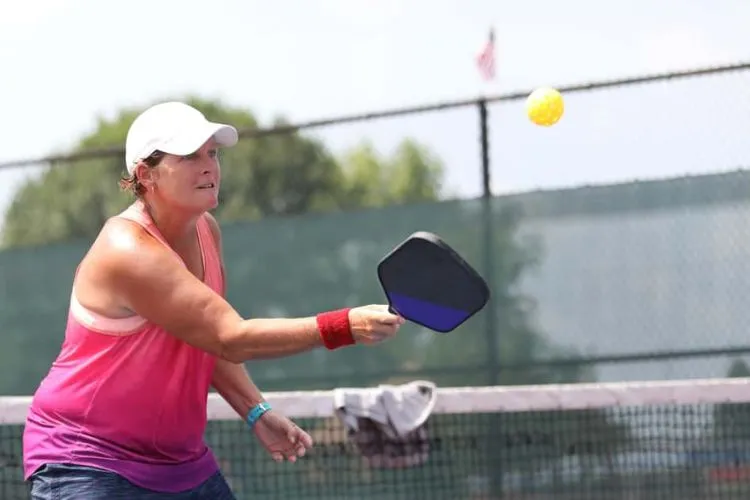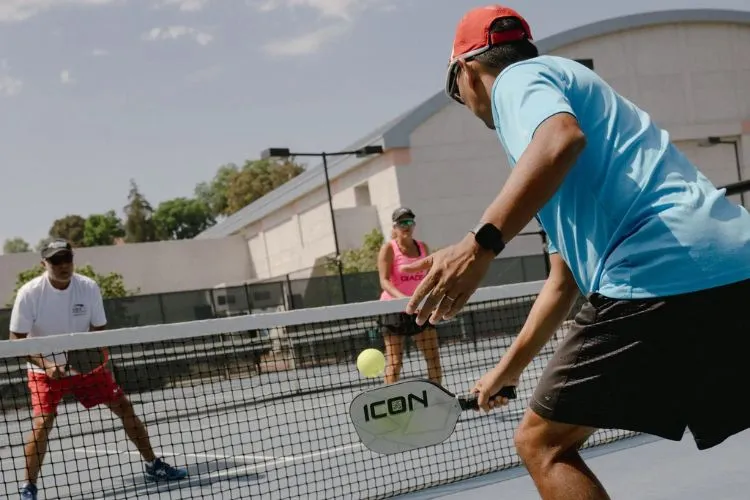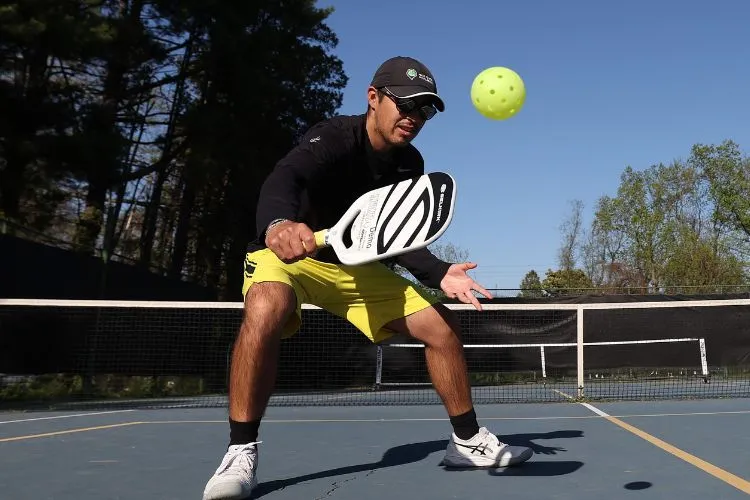Pickleball, a sport that combines elements of tennis, badminton, and table tennis, has seen a meteoric rise in popularity over the past few years.
It’s a game that can be enjoyed by people of all ages and skill levels, from casual backyard players to competitive athletes.
An intriguing aspect for players at every level is the speed at which a pickleball travels during play. So, how fast does a pickleball travel?
Understanding this can significantly impact a player’s approach to the game, influencing everything from shot selection to positioning and strategy.

How Fast Does a Pickleball Travel?
The speed of a pickleball shot can vary widely depending on the type of stroke. A serve or a groundstroke might travel at speeds between 20 to 40 miles per hour, while volleys and smashes can exceed 50 miles per hour.
In professional play, the fastest shots can reach speeds of up to 60 miles per hour, although such speeds are less common in recreational play.
Comparatively, pickleball shots are generally slower than those in tennis but can be faster than shots in badminton and table tennis. This unique speed dynamic adds to the strategic depth of pickleball, requiring players to balance power and control.
Understanding Pickleball
The game of pickleball was invented in the mid-1960s as a children’s backyard pastime but has evolved into a popular sport played worldwide. It is played on a badminton-sized court with a net similar to tennis, using paddles and a plastic ball with holes.
The rules are straightforward, making it accessible to beginners, yet the game requires skill, strategy, and quick reflexes, appealing to advanced players as well.

Pickleball equipment is specialized; the paddles are larger than those used in table tennis but smaller than tennis racquets, and they can be made from various materials such as wood, graphite, or composite.
The balls are typically made of lightweight plastic and come in different designs for indoor and outdoor play.
The Dynamics of Pickleball Speed
Several factors influence the speed of a pickleball. The type of paddle can affect the ball’s velocity, with materials like graphite and composite offering more power and speed than wood.
The design of the ball also plays a role; outdoor balls are heavier and less affected by wind, while indoor balls are lighter and can travel faster in a controlled environment.
The force applied by the player is perhaps the most significant factor. Stronger, more aggressive shots naturally result in higher speeds. Additionally, environmental conditions such as wind and humidity can affect how fast and far the ball travels.
Measuring Pickleball Speed
The speed of a pickleball is measured using technology such as radar guns and high-speed cameras, similar to other sports. These tools can provide instant feedback on shot speed, helping players to refine their technique.

Some mobile apps also offer speed measurement features, making it easier for casual players to track their progress.
Techniques to Increase Pickleball Speed
Improving shot speed in pickleball involves focusing on technique, including paddle grip, swing mechanics, and footwork. A firm but relaxed grip allows for more wrist flexibility, enhancing the power of serves and smashes.
Proper swing mechanics, emphasizing a full range of motion and body rotation, can significantly increase the ball’s velocity. Additionally, strategic footwork and positioning enable players to hit the ball more forcefully by generating momentum.
Managing and Reacting to Speed in Pickleball
Defensive strategies are crucial for handling fast shots from opponents. Good positioning allows players to anticipate and react to speedy shots more effectively.
Drills that improve reaction time and speed management, such as practicing with a faster-paced ball or playing against more aggressive opponents, can also be beneficial.
Safety Considerations
As with any sport, playing pickleball at high speeds comes with the risk of injury. Players should wear appropriate protective gear, such as eyewear, and engage in warm-up and cool-down exercises to prevent strains and sprains.
Being mindful of one’s physical limits and playing safely should always be a priority.

You may also find interesting: What Is The Diameter Of The Pickleball?
Frequently Asked Questions (FAQs)
What is the fastest recorded speed of a pickleball shot?
While specific records can vary, shots in professional play have been known to reach speeds up to 60 miles per hour.
How does the speed of a pickleball compare to a tennis ball?
Pickleball shots are generally slower than tennis shots, which can exceed 100 miles per hour in professional play.
Can the type of court surface affect the speed of a pickleball?
Yes, the court surface can influence the game’s speed, with harder surfaces allowing for faster play compared to softer surfaces like grass.
How do weather conditions influence the playability and speed of a pickleball?
Outdoor conditions like wind and humidity can slow down or accelerate a pickleball, affecting both its speed and trajectory.
What are some drills to improve my ability to handle fast pickleball shots?
Practicing with a machine that simulates fast shots, engaging in reaction time drills, and playing against aggressive opponents can help improve your ability to manage fast shots.
Conclusion:
The speed of a pickleball is a fascinating aspect of the game that influences how it is played and enjoyed. By understanding the factors that affect ball speed and learning how to control and react to it, players can improve their performance and enjoy the game even more.
Whether you’re a beginner looking to learn the basics or a seasoned player aiming to refine your skills, appreciating the role of speed in pickleball can enhance your playing experience.

Pickleball’s more than a game to me—it’s a passion. I write, sharing its highs and lows, the thrills and the lessons. Some tales might draw you to the court, while others give a hint of the game’s magic. So, curious about my journey? Ready to dive deep into the world of pickleball with me? Let’s go.
